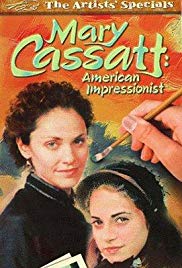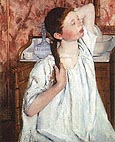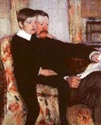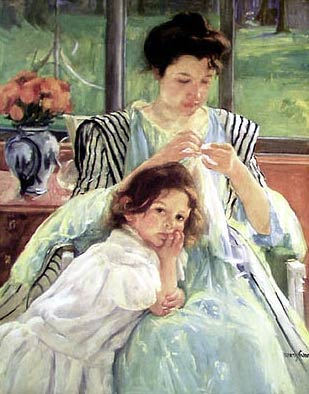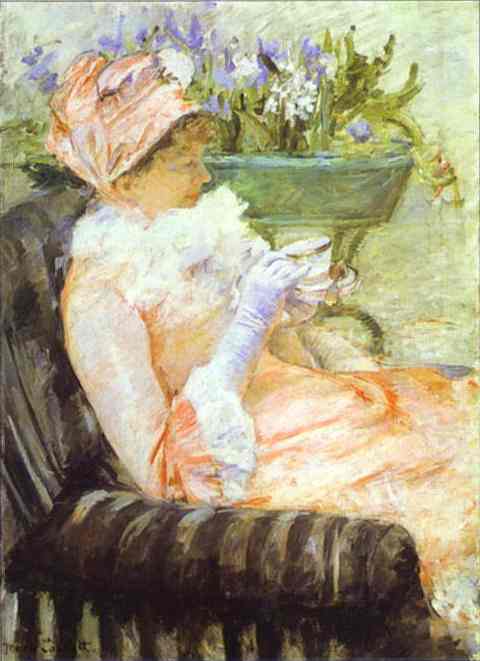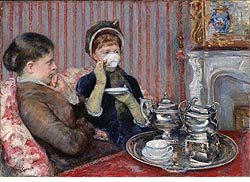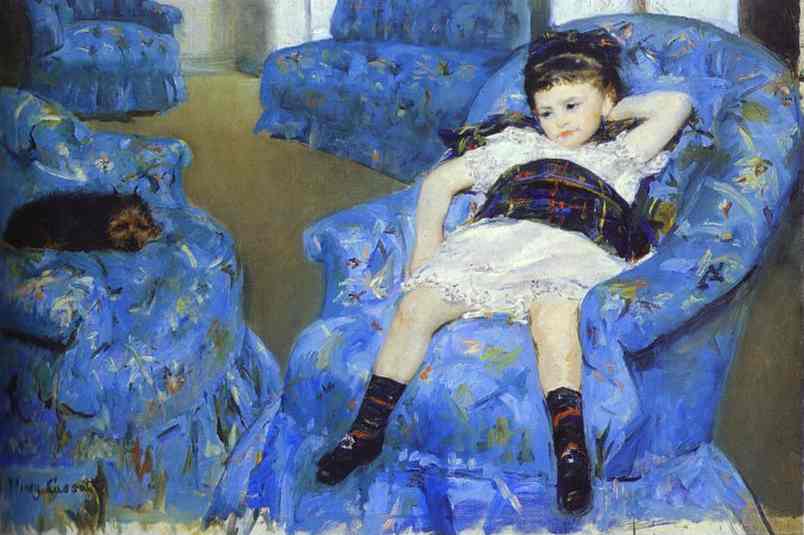One of the principal motifs of Cassatt’s mature work was her tender, glowing portrayals of mothers and their children. During the same period, only one male artist, Auguste Renoir, portrayed the world of domestic intimacy. See, e.g., Mary Cassatt: Painter of Mothers and Children
Mary Cassatt, like many other artists, was influenced by the exhibition of Japanese prints held in Paris in 1890. She crafted a series of 10 colored prints, e.g., Woman Bathing, reflecting the influence of the Japanese masters. In these etchings her focus shifted to line and pattern, whereas in the past, it had been on form. Through these works she brought her printmaking technique to perfection.
Cassatt never married. After 1900, her eyesight began to fail, but she was able to keep working until 1914. France awarded Mary Cassatt the Legion of Honor in 1904. She died in 1926.

